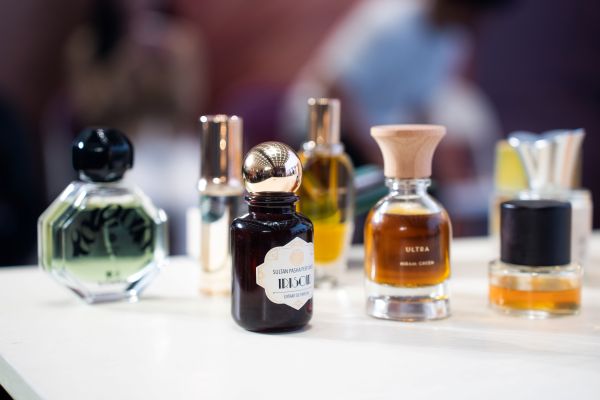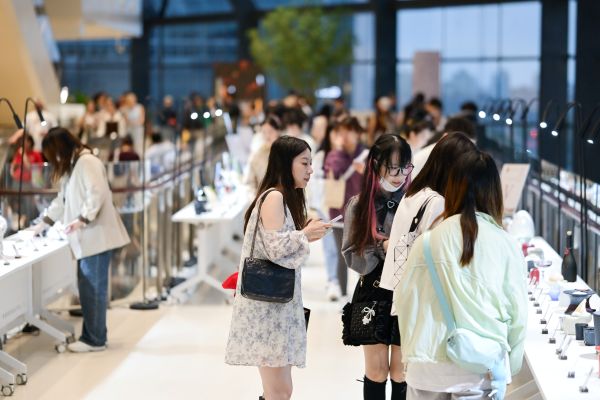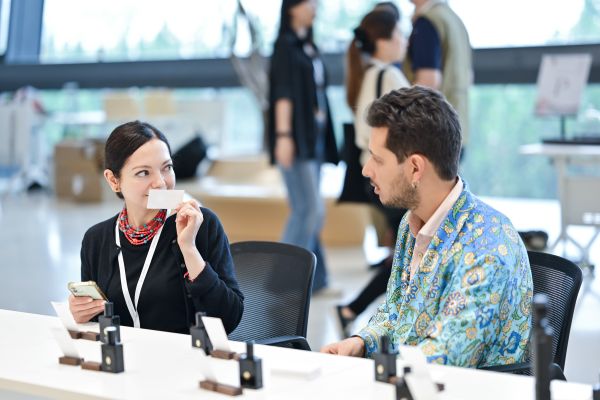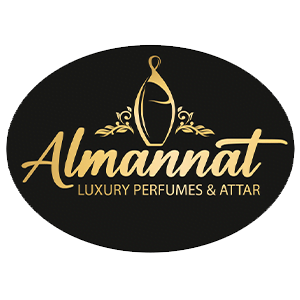Notes Shanghai First Impressions – Bois de Jasmin

By popular demand, I have a new online seminar about working in perfume industry: How to Become a Perfumer. Only two spots remain. Book Now
Shanghai greeted me with the shimmer of rain and neon lights, and within hours of landing, I was already on stage at Notes Shanghai, a major perfume exhibition, speaking about the future of niche perfumery.
I shared a thought that stayed with me throughout the fair: the future of perfumery will belong to those who can tell stories with sincerity. The industry does not need more polished copies of Parisian classics; it needs new voices, new references, and new ways of translating memory into scent. In Shanghai, I felt as if I was watching that future take shape.

Once my presentation ended, I wandered through the exhibition hall. The first day seemed lively, even as the exhibition hall was still in the final setup stages. Brand owners spoke with visitors, indie perfumers put the final touches on their displays, buyers compared notes. The mood was relaxed, almost festive. I have been to many fragrance events, but Notes Shanghai stood out. It felt alive, spontaneous, and genuinely joyful. Every stand was like an invitation to discovery.
While there were a number of high-profile international brands, the focus of Notes Shanghai is on independent brands from Thailand, Malaysia, and of course China. It’s the first major platform in China to support small artisans and local niche houses. I spent the next three days smelling dozens of creations, from fragrances crafted in small studios to those made in collaboration with well-known perfumers like Dominique Ropion, Annick Ménardo, or Quentin Bisch. What struck me most was the sense of freedom. These perfumers were unafraid to experiment, to use local materials like osmanthus, hawthorn, pomelo, ginger lily–or yak excrement*. They built their own olfactory language and delighted in it.
It reminded me that the perfume world is much wider than the European tradition often suggests. China has a rich sensory heritage that runs through its tea, incense, and cuisine. Modern Chinese perfumery is drawing on these traditions and transforming them into something new.

The Beautiful and Unexpected
Two things surprised me immediately. The first was how scent associations can differ across cultures. In China, sandalwood incense is often used in public restrooms, so for many people it carries an everyday familiarity rather than a sacred or meditative tone.
The second was how deeply food influences fragrance trends. Northern by Soulvent, an award-winning perfume built around hawthorn, recalls the sweet-sour candies sold everywhere in China. Other perfumes played with notes of rice and Sichuan pepper, sometimes rendered figuratively, sometimes in the most abstract ways.
And despite the cliché that Asian consumers only prefer light fruity florals, I smelled many bold, textured perfumes: smoky woods, ouds, and spices. I learned that wearing oud is considered auspicious, a sign of good fortune.

Rare Gems
The best part of the fair, however, was meeting people. Visitors ranged from journalists and collectors to curious perfume lovers who simply came to smell. They asked thoughtful questions and shared impressions freely. Being able to speak with them in Chinese, made the exchange even more meaningful.
Another highlight was the Osmothèque exhibit, which brought a collection of thirty-three historical perfumes. Smelling these treasures alongside the new creations from Asian perfumers created a beautiful dialogue between heritage and innovation. I spoke with Thomas Fontaine and Anne-Cécile Pouant, the president and director of the Osmothèque, and we agreed that it was thrilling to observe people’s reactions to these masterpieces.

New Fragrance Scene
Notes Shanghai takes place twice a year, an impressive rhythm for such a large and well-organized event. It reflects the vitality of the Chinese perfume scene and its growing influence on the global fragrance landscape. I also had the honor of serving as a judge for the Golden Osmanthus Awards, which celebrated some of the most creative new perfumes in Asia.
I will share a few of my favorites and behind-the-scenes impressions in my upcoming newsletter. If you would like to discover which fragrances caught the experts’ attention and why, you can subscribe here: Bois de Jasmin Newsletter. A few lucky subscribers will also receive a small sample set of outstanding perfumes.

As I left Shanghai, I realized that the future of perfumery is already here—open, curious, and unafraid to smell different. Notes Shanghai was over, but my journey in China was just beginning.
If you love perfume, put March 2026 on your calendar. The next edition of Notes Shanghai promises to be even more exciting, and there is no better place to experience how the world of scent is changing.
*Yak excrement tincture is an ingredient used by an indie Chinese house called Shennong. In all honesty, it smells wonderful, warm, woody, with a sun-warmed hay nuance. I enjoyed Shennong’s boldness so much that I met Da Fo, the mastermind behind it, in his studio in Chengdu. Stay tuned for that rollercoaster experience!

Photography by Notes Shanghai 2025

